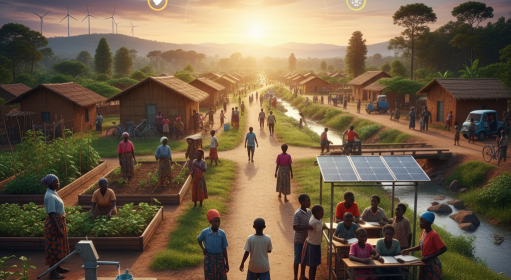Our planet is experiencing more frequent and intense weather disasters due to climate change. From record-breaking heatwaves to catastrophic hurricanes, these events are no longer just “natural disasters” – human-caused global warming is supercharging them.
How Climate Change Intensifies Extreme Weather
1. Heatwaves: The Silent Killer
- Mechanism: Higher baseline temperatures make extreme heat more likely
- Climate Link: +1.1°C global warming = 3-5x more frequent heat extremes
- Examples:
- 2021 Pacific Northwest “Heat Dome” (116°F in Portland)
- 2023 European summer (record temps across Mediterranean)
- Impact: Deadly health effects, power grid failures, wildfires
2. Hurricanes & Tropical Storms: More Powerful, Wetter
- Mechanism: Warmer oceans = stronger storms
- Climate Effects:
- 7% more intense rainfall per 1°C warming
- Slower-moving storms (like Hurricane Harvey)
- More rapid intensification (like Hurricane Ian)
- Examples:
- 2017 Hurricane Harvey (60″ rain in Texas)
- 2022 Hurricane Ian ($113 billion in damage)
3. Floods: When the Sky Falls
- Mechanism: Warmer air holds 7% more moisture per 1°C
- Climate Impact:
- More frequent “100-year floods”
- Urban flooding from overwhelmed drainage
- Examples:
- 2022 Pakistan floods (1/3 country underwater)
- 2021 Germany/Belgium floods (200+ deaths)
4. Droughts & Wildfires: The Scorched Earth
- Mechanism: Higher temps increase evaporation
- Climate Effects:
- Longer fire seasons (western US season now 3 months longer)
- “Flash droughts” developing in weeks
- Examples:
- 2020 Australian “Black Summer” fires
- Ongoing megadrought in southwestern US
5. Winter Storms & Cold Snaps: The Arctic Connection
- Mechanism: Weakened polar vortex from Arctic warming
- Climate Paradox: Global warming can intensify winter storms
- Examples:
- 2021 Texas freeze (power grid collapse)
- 2022 “Bomb Cyclone” in eastern US
The Fingerprint of Climate Change
Scientists now use attribution studies to determine climate change’s role in specific events:
- Heatwaves: 90-100% climate influence
- Heavy Rainfall: 50-90% more likely
- Droughts: 30-50% more severe
- Hurricanes: 10-30% wetter
Key Stat: Since 2000, the US has experienced 3x more billion-dollar disasters than in the 1980s (adjusted for inflation).
Why This Matters for You
- Economic Costs: $145 billion/year in US damages
- Health Risks: Heat stress, poor air quality, disease spread
- Food Security: Crop failures from droughts/floods
- Infrastructure: Roads, bridges, and buildings not designed for new extremes
What Can We Do?
Individual Actions:
- Prepare emergency kits for disasters common in your area
- Support flood-resistant urban planning
- Reduce personal carbon footprint
Systemic Solutions:
- Transition to clean energy
- Implement climate-resilient infrastructure
- Early warning systems for extreme weather
Watch This: PBS: How Climate Change Makes Hurricanes Worse
Infographic: NOAA’s Billion-Dollar Disasters Report




